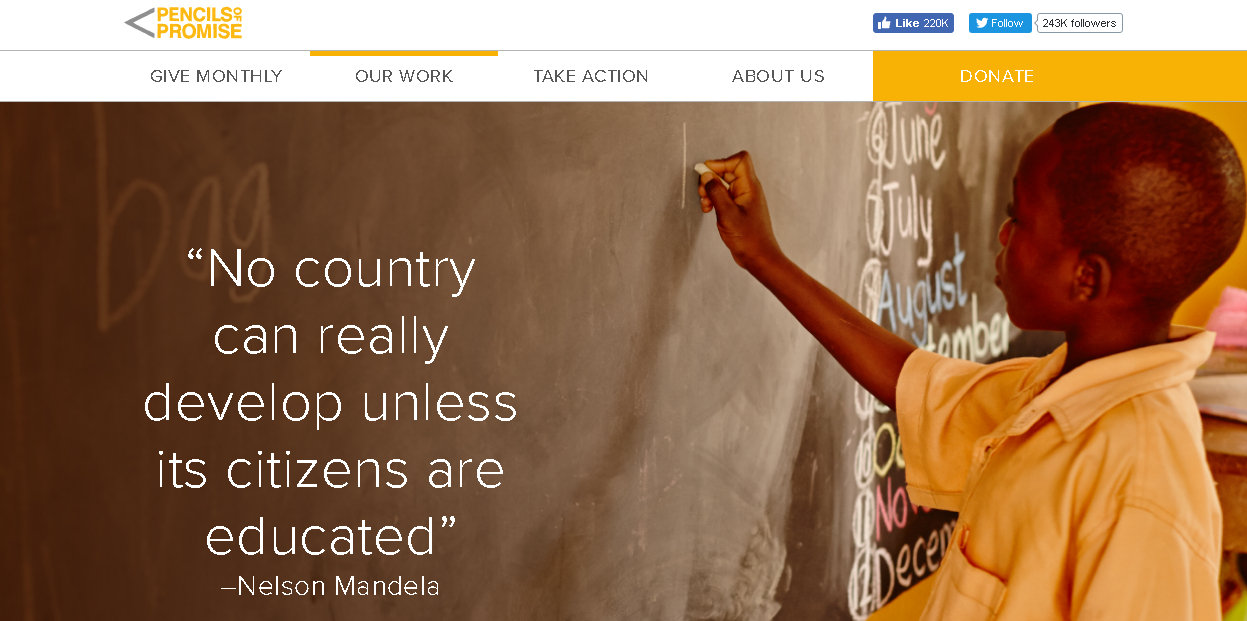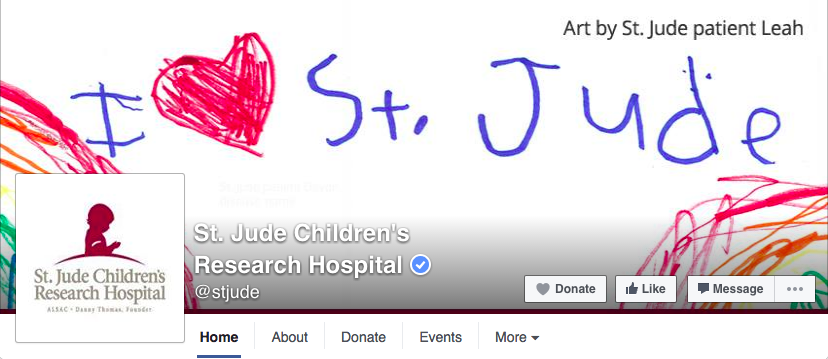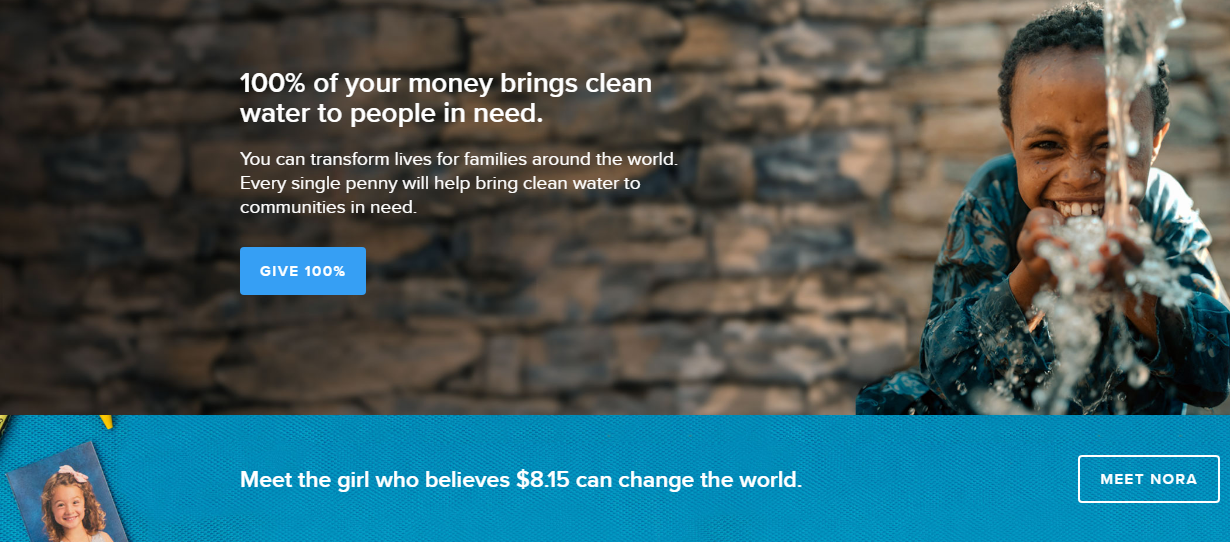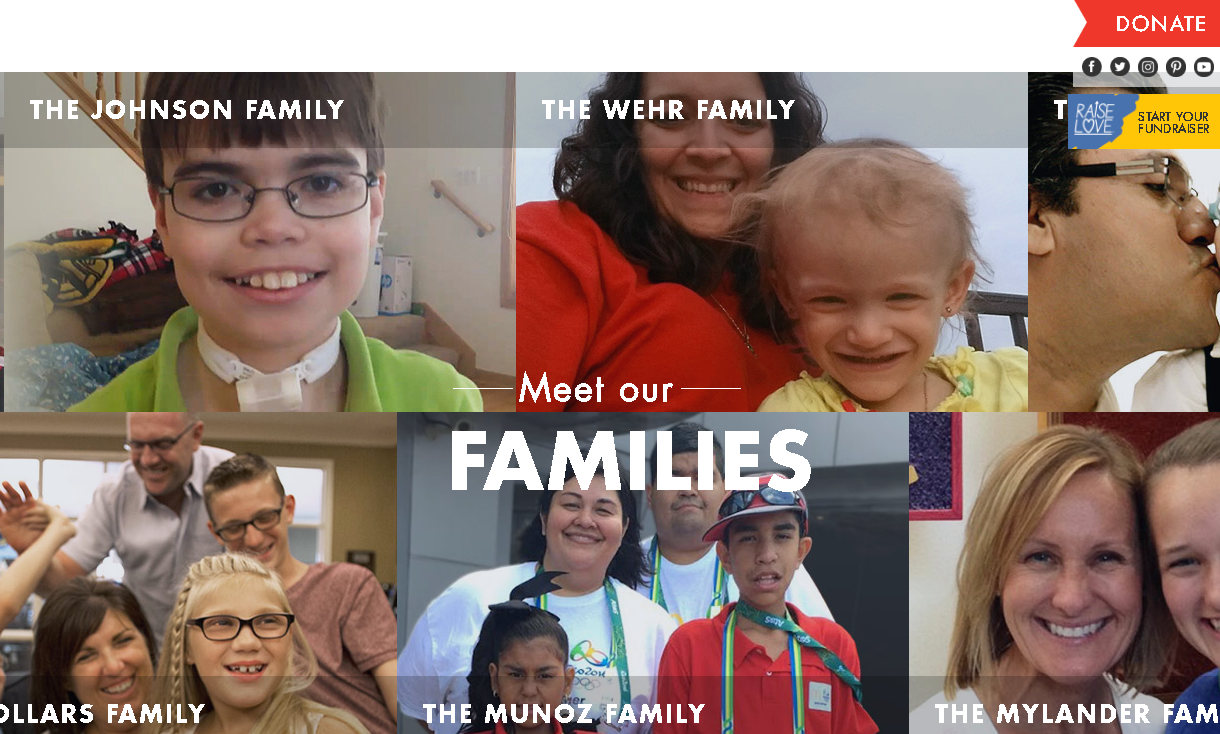
The difference between growing your organization and missing out on valuable support is all in how you present your organization.
The most powerful edge nonprofits and universities have over other sectors, especially for-profit businesses, is the ability to tell a great story about what you are doing and why it matters so much.
“Donors don’t contribute to ‘causes’; they give money to help specific people attain specific goals. And people don’t join movements to cure a disease; they spark movements to help one person who they feel connected to through story,” says The Storyteller’s Secret.
So, let’s take a look at the organizations who are telling great stories – and why what they are doing is working so well.
Pencils of Promise
Founded to help provide education for children around the world, Pencils of Promise started with a vision and a story. The founder had given a child a pencil on a trip to India and that’s when it all started. Today, they still do great work founding schools, empowering teachers and providing a pathway to education for students.
They also tell great stories about the people they serve and the people who donate, such as this blog post about Julpa Purani and her lemonade stand.
By telling personal stories about specific individuals who are supporting their organization, Pencils of Promise both informs others about ways to give back and inspires support.
St. Jude’s Children’s Research Hospital
Although most people are familiar with the name now, at one point St. Jude’s was in such a bad position that they considered closing altogether. Marketing efforts that put their patients at the center of attention and story-telling techniques across all kinds of different channels helped revive the hospital and allow them to keep serving patients.
You’ll find childrens’ artwork, poems, testimonials and more shared in a variety of ways to help connect supporters with their cause.
Alongside these poignant techniques that help potential donors understand connect with the children, they used pointed messaging that further invokes emotion, such as: Please give to help more kids live.
Stories don’t always need to be lengthy blog posts or full videos, so use the St. Jude technique of thinking about what is available from those you serve and how it can help donors connect.
Charity: Water
“I gave $8.15 because I wanted people to stop dying.”
One of the first things you’ll see visiting Charity: Water online is the opportunity to meet Nora, the girl who is inspiring giving after her donation on World Water Day.
Once again you can see the simple impact of using a strong supporter to give donors someone they can connect with – whether that person is a child in need like at St. Jude’s or a child who is trying to help like Nora.
By giving Nora a spotlight, Charity: Water is challenging others to step-up and match what a six-year-old gave on World Water Day. It immediately begs the question, “if this is what one little girl can do, what can I do?”
It captures attention and with heartwarming touches like her smiling photo and artwork she drew, it helps online browsers understand why this matters and what they can do to help with the simple, clear ask of giving $8.15.
Make a Wish America
Every “wish” that gets fulfilled by the Make a Wish foundation is a story, and it permeates everything they do – making it not only an incredibly well-known organization but one that successfully drives their fundraising. On nearly every page of the website you can find children with their wishes, like this simple banner that decorates the donation page.
Some children wish to meet the President, be Batman, or something more simple – like becoming a cowgirl. Whatever the wish, the story of the child involved and the people who make it possible to carry out creates a narrative arc filled with a natural plotline: one of challenge and triumph in the face of adversity.
Think about how your organization can use similar narrative arcs to create a story. Also keep in mind that story does not need to be long to be evocative, like Hemingway’s famous six-word story (For sale: Baby shoes, never worn) you don’t need pages of text to make the point.
Ronald McDonald House Charities
Once again, story-telling takes a front seat on the home page of the Ronald McDonald House Charities, showcasing the children and families they help support. Giving the opportunity to see and connect with those who are helped by your mission means people are more likely to offer their support.
Another smart tactic used here is the use of a floating donation button – no matter where you scroll on the home page, it’s easy to choose to make a donation. While not a story-telling technique, this is a smart idea: keep your donation button as easy to find as possible to allow for more donations.
On top of that, remember that images like these are a great addition to your story- even the home page of your website should tell a story. If a picture is worth a thousand words the sliding images of every family impacted by a donation tells its own story: you’re making a difference when you give to Ronald McDonald house. You don’t even need more text to convey that idea. You know just from looking at these family photos.
Conclusion
No matter what your organization does, there’s a story. Even causes that don’t seem as glamorous have an impactful story to tell: you are affecting change in someone’s life, it’s simply a matter of finding that person and uncovering the story.
Whether you are telling the story with videos, artwork and poetry from the people you serve, powerful photography or another unique method, story-telling can help connect your potential donors in a more powerful way than delivering facts and figures.
When you need help sharing your story via email, social media, direct mail or some mix of many different channels, AlumniFinder is here to support you.
Let us help share your story.





